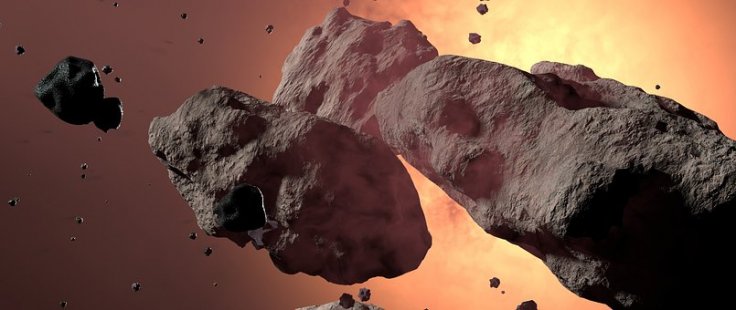
A pebble that was discovered in Egypt in 2013 reportedly does not belong to the earth. Nor do the micro-minerals contained in it exist anywhere else in the solar system. Researchers have claimed that the stone is of extra-terrestrial origin.
The Hypatia stone was discovered in 2013 in Egypt's south-west zone and was named after Egypt's 4-5th century CE scientist Hypatia of Alexandria. The compounds of the Hypatia stone, according to researchers, do not come from any other meteorites. What baffled scientists was the presence of a unique chemical compound in the stone.
Analysis of the stone revealed that the diamond particles do not belong to any known comet or meteorites. The features of the same are primarily extraterrestrial. Few believe that it might be a part of a comet nucleus or was formed at low temperatures. This discovery, according to scientists, has the capability of solving doubts linked to the formation of our solar system.
Researchers from the University of Johannesburg, upon analyzing the carbonaceous matrix of the stone found that the presence of silicate matter is low, thus setting the stone apart from other interplanetary material that has been found on Earth.
Lead researcher Jan Kramers opined that few minerals in the Hypatia stone have properties similar to the sun. Metaphorically, the structure of the stone has been compared to the internal structure of a fruitcake. According to him, the cherries and nuts in the cake are similar to the mineral grains of the Hypatia stone. Flour dusting in the cake can be compared to the secondary materials found in the fractures of the stone.
Scientists state that Hypatia is not a chondrite or non-metallic meteorite which have less carbon content and a lot of silicon. Hypatia, instead, has low silicon content. According to Kramer, it contains "a high amount of very specific carbon compounds, called polyaromatic hydrocarbons, or PAH".
Also read: 5000-year-old rock art in Kashmir depicts sun and supernova?
While crashing to the earth, some of the PAH in the Hypatia stone tuned into sub-micrometre diamonds, however, the pure aluminium content was also found in the stone. Some of the PAH in Hypatia at some point turned into sub-micrometer diamonds - probably on its impact on the earth. Aluminium in its pure metallic form is extremely rare to find, even in the solar system. But the team found silicon carbide or moissanite and silver iodine phosphide in the Egyptian stone.
The analysis revealed that Hypatia is formed with unchanged materials belonging to the sun, though it was formed after the sun. The whole finding challenges the age-old concept of planetary formation, according to which materials are evenly distributed throughout the protoplanetary disc.
Kramers added that Hypatia was born in low temperatures, even below the temperature required to make liquid nitrogen (-196 Celcius) on earth. Where Hypatia comes from or who left the stone here is the topic of the team's next quest. The paper has been published in the journal Geochimica et Cosmochimica Acta.
As gold originated from asteroid impacts, billions of years ago, the discovery of this extraterrestrial stone can lead to other exciting revelations.









